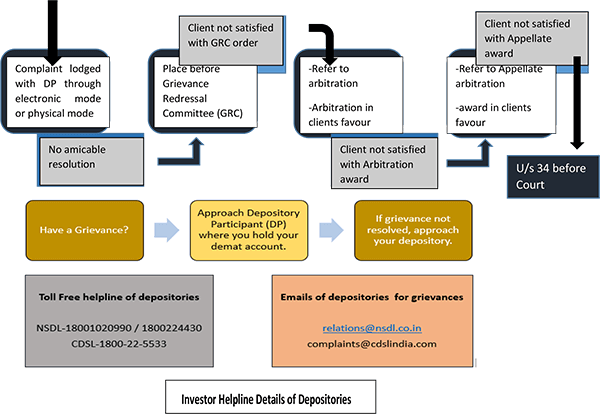Introduction
In recent times, the United States has been facing some challenging economic situations, which are causing concerns not only within the country but also around the world. One of the major issues that the US is currently grappling with is the debt ceiling crisis.
This blog aims to explain the debt ceiling crisis in a simple way and explore its potential impact on the global economy, including that of India.
What is the Debt Ceiling Crisis?
Imagine you give your child a special credit card with a limit of $1,000. You tell them it’s for emergencies only, like if they need to buy something really important.
In the first week itself, the child spends the entire $1,000 on ordering pizza and buying video games. Now the credit card is maxed out, and they can’t use it anymore.
Later, the child had some actual emergency & required some urgent cash. But since he/ she has used up the entire available limit on the credit card, hence he cannot spend anymore further irrespective of the cause.
In the same way, the debt ceiling in the United States is like a limit on how much money the government can borrow to pay for important things like schools, hospitals, and defense. When the government reaches that limit, it can’t borrow any more money unless the limit is raised.
The debt ceiling crisis happens when the government has already borrowed a lot of money and needs to borrow more, but it can’t because it has reached its limit. It’s like your child wants to spend more on the credit card even though it’s already maxed out.
The government and lawmakers have to work together to find a solution and make sure the country can pay its bills without borrowing too much. It’s important because if they keep borrowing without limit, it can cause big problems for the country’s finances and the people living there.
Understand the Technical Aspect
As discussed above, the debt ceiling is the ceiling (or max) amount that the US government is allowed to borrow to pay the bills of the nation. Now, the responsibility for approving the budget and providing funds for the government’s operations lies with Congress, which consists of two parts: the House of Representatives and the Senate.
The debt ceiling issue arises because the United States has been consistently spending more money than it earns since 2001, resulting in a fiscal deficit.
To cover this deficit, the government needs to borrow money. However, there is a maximum limit to how much the government can borrow, which needs to be periodically increased to allow for additional borrowing and to keep the government functioning.
If the debt ceiling is not increased or suspended, it means that the government would not be allowed to borrow any more money to pay its outstanding debts.
The US has defaulted on its debt only once before, in 1979. It was not an actual default but just happened due to a technical bookkeeping glitch, which was rectified very soon.
US Secretary of Treasury Janet Yellen has said the United States could default in early June if the debt ceiling is not extended.
What is the ongoing debt-ceiling crisis?
Now, the debt ceiling has been increased multiple times in the past, which enabled the US government to function properly and also prevent the nation from defaulting.
However, the Biden administration and the Republicans in the House are currently at an impasse. The plans that are proposed by each other are unacceptable to both parties.
The Republicans have proposed a bill in the House of Representatives to raise the debt ceiling by $1.5 trillion, allowing the government to borrow more money. This increase would be in effect until either March 31, 2024, or until the specified conditions are met, whichever comes first.
However, the Democrats and the Biden administration have not yet accepted these conditions, leading to a disagreement and potential delay in reaching a resolution.
Republicans claim their proposed measures are necessary for US fiscal health, while Democrats argue they are cutting crucial welfare measures.
Impact of possible US default
A US default would have disastrous consequences for the economy. According to Moody’s Analytics, even a breach of the debt limit for just a week would lead to a rapid weakening of the economy, resulting in the loss of approximately 1.5 million jobs.
Moreover, if a government default were to extend beyond a short period, the consequences would be even more severe. According to the analysis conducted by Zandi and his colleagues, US economic growth would decline, resulting in the loss of 7.8 million jobs.
Borrowing rates would increase, causing the unemployment rate to rise from the current 3.4% to 8%. Additionally, a stock-market decline would wipe out $10 trillion in household wealth.
Impact on the Global Economy
The debt ceiling crisis in the US can have ripple effects on the global economy. Since the US is one of the largest economies in the world, any disruption in its financial system can cause instability in other countries too. Here are a few ways the crisis can impact the global economy:
1. Global Business: If the US government defaults, no corner of the global economy will be spared. Chinese factories that supply electronics to the USA will experience an order decline. Swiss investors who hold US Treasuries will face financial losses. Sri Lankan companies might lose the ability to use US dollars as an alternative to their own unstable currency.
2. USD is the global reserve currency: According to the International Monetary Fund (IMF), the US dollar comprises approximately 58% of the foreign exchange reserves held by central banks worldwide. The euro is the second most prominent currency, accounting for around 20% of global reserves. China’s yuan, on the other hand, makes up less than 3% of the total reserves. The dollar value will shoot up, and various countries will get unable to purchase USD.
3. Financial Market Volatility: Uncertainty surrounding the debt ceiling can lead to nervousness among investors and cause fluctuations in stock markets and currency exchange rates. This volatility can affect investments and trade between countries, impacting businesses and individuals worldwide.
4. Reduced Confidence: The debt ceiling crisis can shake confidence in the US economy and its ability to meet financial obligations. This can lead to a decrease in consumer and investor confidence, potentially dampening economic growth globally.
5. Trade and Export Challenges: If the crisis leads to a recession or economic slowdown in the US, it can affect global demand for goods and services. Reduced consumer spending in the US can impact businesses around the world, including those in India that rely on exports to the US market.
Impact on India’s Economy
India is closely connected to the global economy, and any disturbances in major economies like the US can have consequences. Here are a few ways the US debt ceiling crisis can impact India’s economy:
1. Lending nations: US default will substantially impact the economies that lend to the US market, as almost 30% of the US debt is held outside the country. India alone accounts for USD220 billion of the total USD31 trillion.
2. Trade and Investments: A slowdown in the US economy can reduce demand for Indian exports and impact sectors like information technology, textiles, and pharmaceuticals. Moreover, reduced investor confidence may lead to a decline in foreign investments in India.
3. Exchange Rates: Volatility in currency exchange rates can affect India’s imports and exports, making them costlier or cheaper. This can impact businesses involved in international trade and influence inflation levels within the country.
4. Global Financial Stability: If the debt ceiling crisis escalates and triggers a global economic downturn, it can create challenges for Indian banks, financial institutions, and the overall stability of the financial system.
Conclusion
The US debt ceiling crisis is a critical situation that requires careful resolution to avoid potential economic disruptions. As it unfolds, the global economy, including India, will closely watch its impact.
It’s important for governments, policymakers, and citizens to work towards finding solutions and maintaining stability in the financial system to minimize the adverse effects on economies worldwide.
Disclaimer: The information provided in this blog is for educational purposes only and does not constitute financial or investment advice. Readers are advised to conduct their own research and consult with financial professionals before making any investment decisions.




